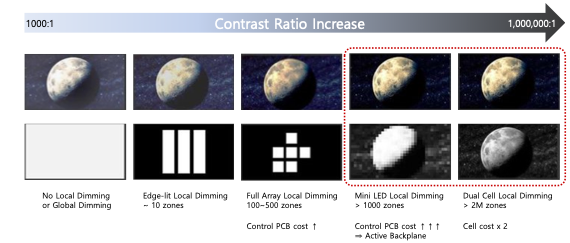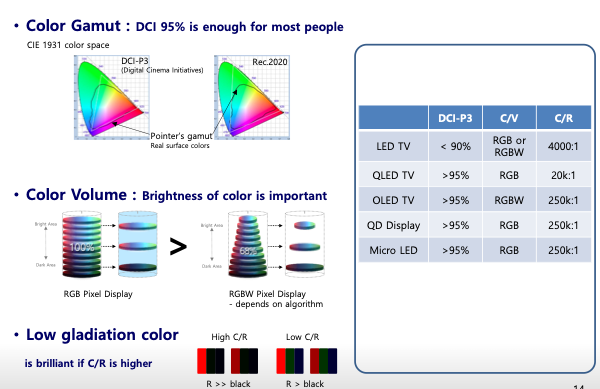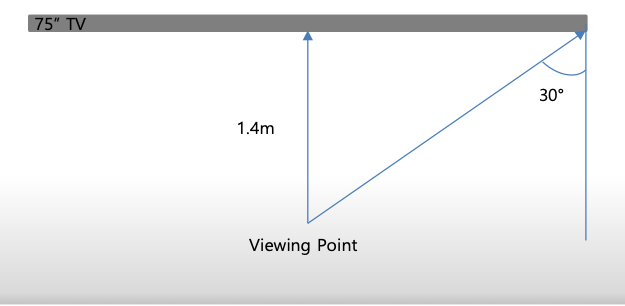Vertical Divider
Musing in Shanghai at the International OLED Summit
LCD TVs & Raising the Contrast Ratio
January 20, 2020
The challenge for high end LCD TVs to compete with OLED TVs has come down to increasing the contrast ratio and the preferred solution is some form of local10 zones dimming, which today varies from 10 zones for edge lighting to 100-500 zones for FALD to 1,000 zones for Mini LEDs to 2m zones for dual cell devices. As would be expected the contrast ratio increases almost linearly with the # of zones. Like any sub-optimized solution (a single emitter/subpixel), there are some downsides. For local dimming it happens in two categories:
Figure 1: Contrast Ration vs. # of Local Dimming Area
January 20, 2020
The challenge for high end LCD TVs to compete with OLED TVs has come down to increasing the contrast ratio and the preferred solution is some form of local10 zones dimming, which today varies from 10 zones for edge lighting to 100-500 zones for FALD to 1,000 zones for Mini LEDs to 2m zones for dual cell devices. As would be expected the contrast ratio increases almost linearly with the # of zones. Like any sub-optimized solution (a single emitter/subpixel), there are some downsides. For local dimming it happens in two categories:
- If an HDR image is smaller or larger than the dimming area, the dimming algorithm averages the luminance demands over the entire area resulting in a lower luminance than the target for the image. It may not be noticeable, but it will be lower than intended.
- As an image moves across the display and cross area boundaries, the luminance will change making it look jittery. Again, depending on the speed and the # of areas, it may be noticeable by the viewer.
Figure 1: Contrast Ration vs. # of Local Dimming Area
Source: Samsung
In designing OLED display dopant material, there is always a tradeoff between efficacy, lifetime and color gamut. As a result, the chemical engineers are tasked to meet a certain color gamut with the lowest power consumption and longest lifetime. TVs require the longest lifetime, so often color gamut and efficacy is sacrificed, for smartphones, efficacy is most important. While there are many different color gamut standards, today 95% of DCI is expected, but in the future the industry is moving to REC 2020.
Color volume is a measure of the relationship between max luminance and color gamut, where the highest luminance is viewed as an advantage. Finally, the higher the contrast ratio the better the viewing experience. The next chart shows the three-color categories and compares the viewing experience.
Figure 2: Color Performance and the Display Experience
Color volume is a measure of the relationship between max luminance and color gamut, where the highest luminance is viewed as an advantage. Finally, the higher the contrast ratio the better the viewing experience. The next chart shows the three-color categories and compares the viewing experience.
Figure 2: Color Performance and the Display Experience
Source: Samsung
OLEDs have an inherent advantage over LCD TVs in viewing angle because the light emission is closer to the viewer. As a result, OLED TVs have lower washout, color shift and black washout at off angles. With smaller TVs, the viewing angle response was prevalent when viewers sat at the side of the TV. But as TV got larger, most viewer are able to sit in front of the TV. However, the larger the TV, the greater the viewing angle to the edge of the TV and for a 75” TV could be as much as 30%, resurfacing the viewing angle problem. As a result, Samsung introduced viewing angle film to reduce the impact on color shift and washout. However, it has been widely reported that the viewing angle film had negative effects of lower luminance and color gamut.
Figure 3: Viewing Angle for 75” TVs
Source: Samsung
|
Contact Us
|
Barry Young
|



